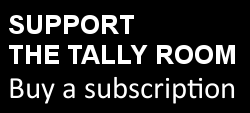After multiple years of making plans and implementing them, the NSW government is now on the verge of announcing something which should have come much sooner. For councils that have already been amalgamated, there will be plebiscites where voters will be asked to decide on whether the amalgamation should be wound back and the former councils restored. In addition, all of those amalgamations which have yet to be implemented appear likely to be cancelled. That means no amalgamations for the eastern suburbs of Sydney, the north shore, Newcastle or Wollongong, along with a scattering of other council areas.
This decision leaves the NSW government’s amalgamation plans in a complete mess. Councils that were facing mergers have been divided into two classes based on whether lawsuits were launched by those councils delaying the amalgamations. Regardless of their merits, amalgamations won’t go ahead where they haven’t yet been implemented, meaning in some cases we will see tiny councils like Hunters Hill and Burwood surviving alongside much larger neighbours.
I’ve made no secret that I am supportive of some enlarging of councils in the eastern half of Sydney, although many of the proposed amalgamations were unnecessary or unwise, but it was always problematic to implement the decision without a democratic mandate. It’s not surprising that elected councils would oppose amalgamation: I don’t think it should be necessary for the council to support a proposal. But a proposal agreed to by the state government should go to a plebiscite of the people in that community before being implemented.
I suspect quite a few of the mergers would have been successful if plebiscites had been held, at least in Sydney. Now we face the possibility that unwise mergers will be undone after a lengthy period of pain and after the spending of large amounts of money on the amalgamations.
We have recent experience of multiple local councils in Queensland de-merging following overwhelming plebiscite results, but all of these cases were in regional areas. I do expect that most of the regional council mergers will be undone by plebiscites, although some may survive.
We have no real sense of how plebiscites will go in Sydney, or how unpopular the amalgamations have been. There are some that on their face merge councils that are already quite large (Canterbury-Bankstown, Hornsby-Ku-ring-gai) or combine areas with no common interest (Bayside council) but I suspect that a lot of local voters are happy with the new councils in Parramatta, Inner West and Georges River, to take some examples. We will never find out if voters in the eastern suburbs or north shore would have supported amalgamating their councils – such a plebiscite could have decided the issue and saved a lot of political pain a few years ago.
The results of the plebiscite could end up being messy. What if Ashfield votes to stay in the Inner West but Marrickville votes to leave? Things will be particularly messy in the Parramatta-Cumberland area, where pieces of each council were broken up. I live in Parramatta and the new council is not much larger than the old council: it just covers different areas.
What if the voters in the heartland of Parramatta vote to reject the amalgamations, but the new additions from the Hills, Hornsby and Auburn councils vote to stay? What if Granville votes to return to Parramatta council, but the former Holroyd and Auburn councils (which don’t share a border) want to stay as Cumberland?
Whatever happens, this should produce some interesting electoral contests. Up until now, the campaign against council amalgamations was focused on the forced nature of the mergers. Will there now be room to debate the merits of particular council sizes and boundaries in the context of a fair democratic fight?
 It’s taken some time to pull together the data, but I’ve now got a complete set of booth-level data from the 2012 and 2016 local council elections.
It’s taken some time to pull together the data, but I’ve now got a complete set of booth-level data from the 2012 and 2016 local council elections.
 Yesterday I posted a quick summary of the NSW government’s council amalgamation announcement.
Yesterday I posted a quick summary of the NSW government’s council amalgamation announcement. It’s only nine days now until Queenslanders vote for their councils for the next four years (along with a referendum on
It’s only nine days now until Queenslanders vote for their councils for the next four years (along with a referendum on 
